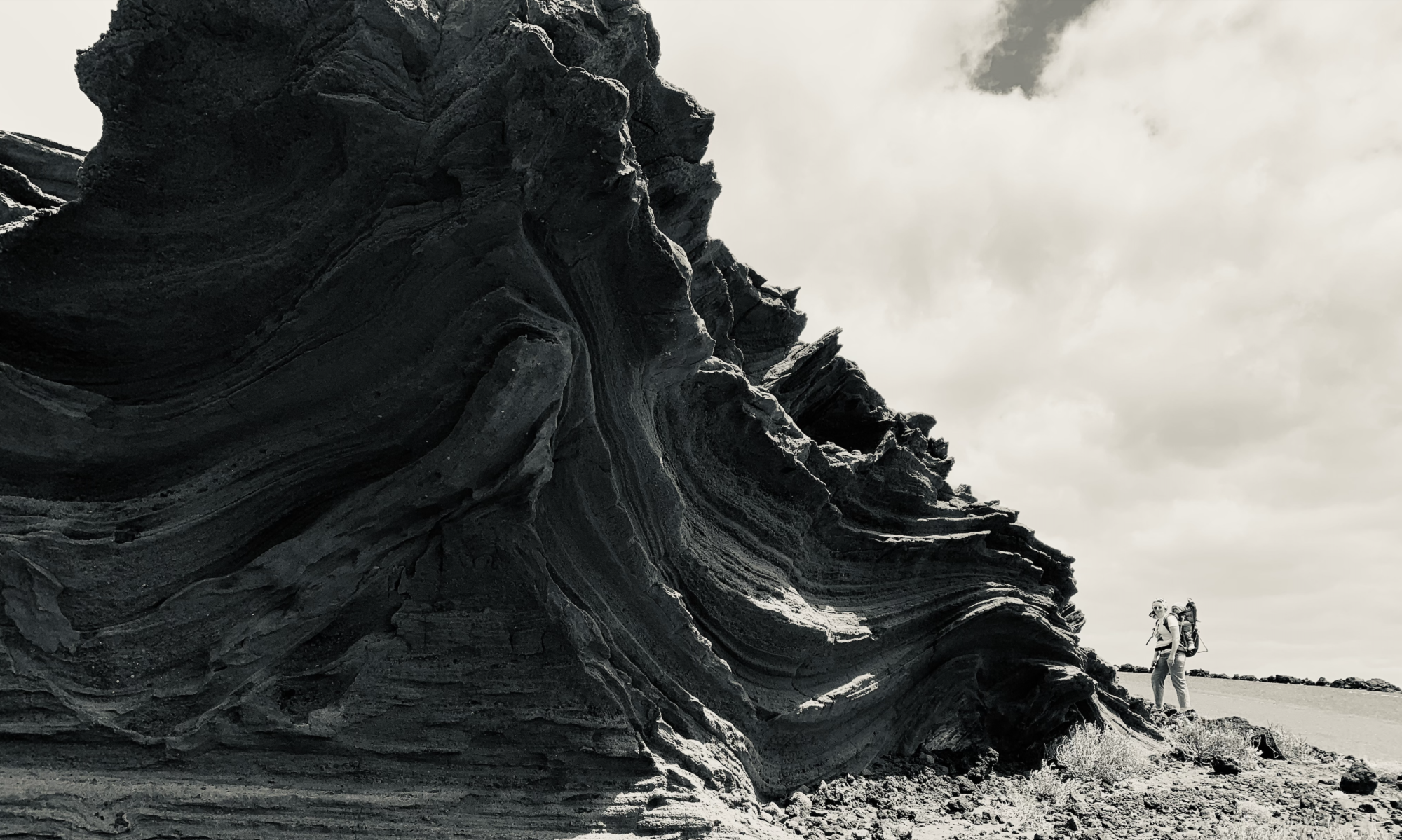2023
This book focuses on performance and performance-based artworks as seen through the lens of conservation, which has long been overlooked in the larger theoretical debates about whether and how performance remains.
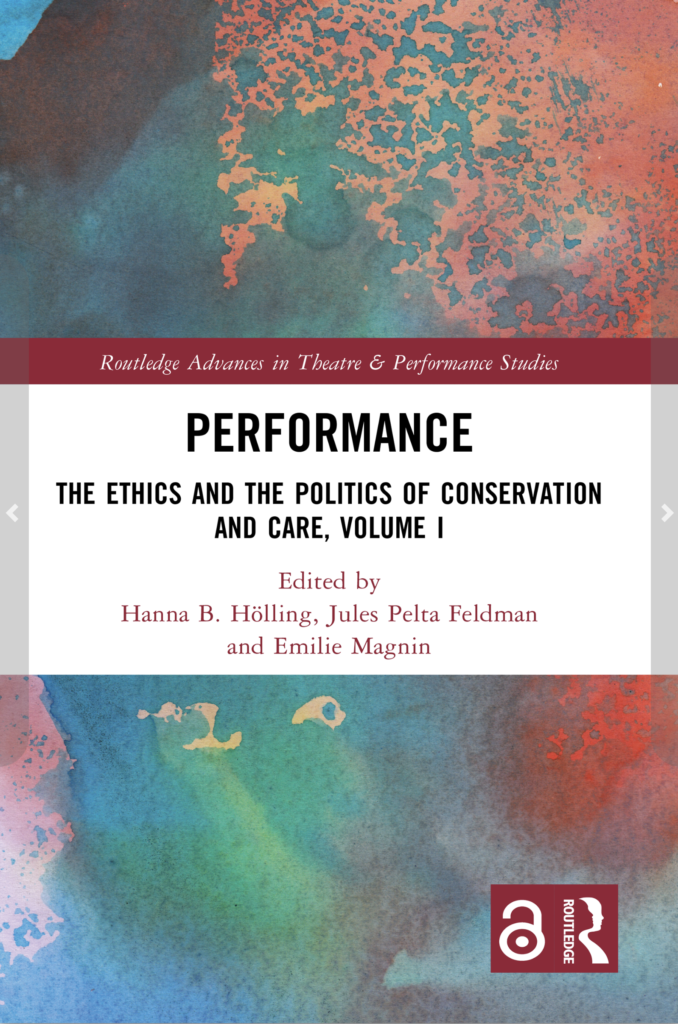
Unraveling the complexities involved in the conservation of performance, Performance: The Ethics and the Politics of Conservation and Care (vol. 1) brings this new understanding to bear in examining performance as an object of study, experience, acquisition, and care. In so doing, it presents both theoretical frameworks and functional paradigms for thinking about—and enacting—the conservation of performance. Further, while the conservation of performance is undertheorized, performance is nevertheless increasingly entering the art market and the museum, meaning that there is an urgent need for discourse on how to care for these works long-term. In recent years, a few pioneering conservators, curators, and scholars have begun to create frameworks for the longterm care of performance. This volume presents, explicates, and contextualizes their work so that a larger discourse can commence. It will thus serve the needs of conservation students and professors, for whom literature on this subject is sorely needed.
This interdisciplinary book thus implements a novel rethinking of performance that will challenge and revitalize its conception in many fields, such as art history, theater, performance studies, heritage studies, and anthropology.
Co-edited with Jules Pelta Feldman and Emilie Magnin.
Contributing authors: Pip Laurenson, Rebecca Schneider with Hanna B. Hölling, Hélia Marçal, Gabriella Giannachi, Shadreck Chirikure, Iona Goldie-Scot, Brian Castriota with Claire Walsh , Farris Wahbeh, Kelli Morgan, Kongo Astronauts (Eléonore Hellio And Michel Ekeba), Dread Scott, Karolina Wilczynska Cori Olinghouse with Megan Metcalf, Erin Brannigan with Louise Lawson, Cauleen Smith.
The book is freely available OPEN ACCESS: https://www.taylorfrancis.com/books/oa-edit/10.4324/9781003309987/performance-hanna-h%C3%B6lling-jules-pelta-feldman-emilie-magnin.
2022
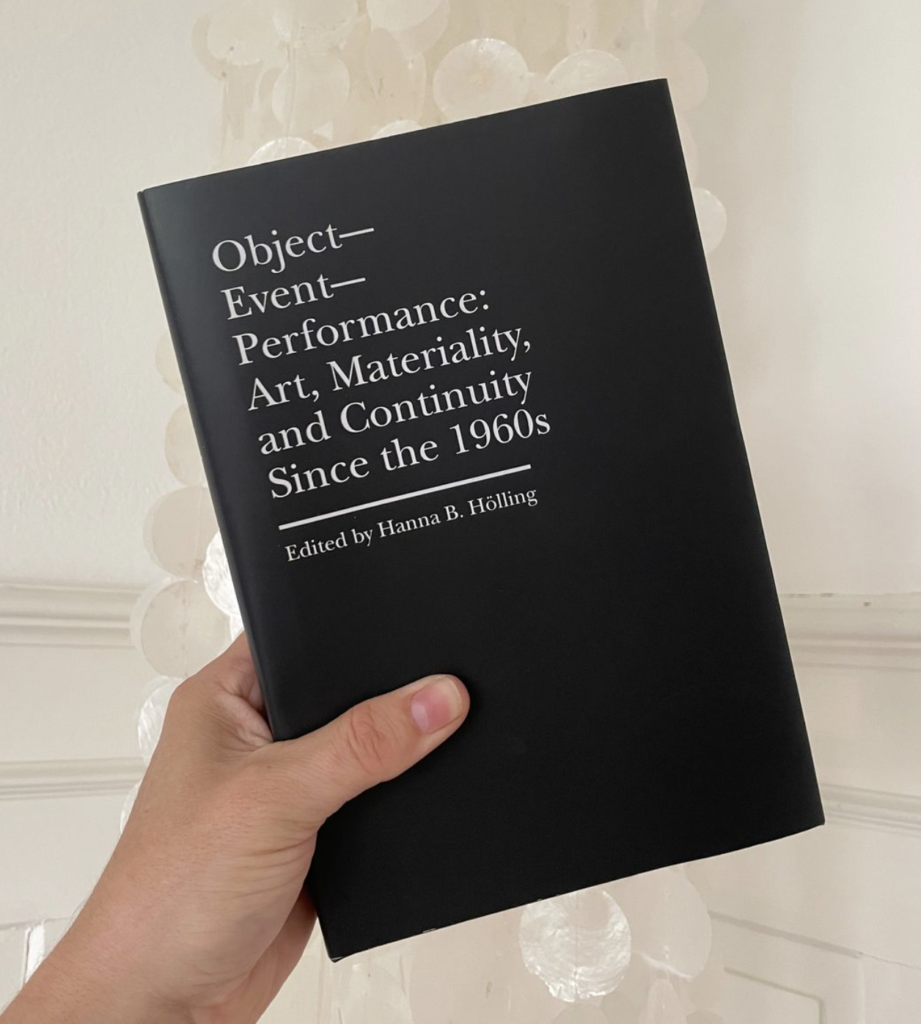
Object—Event— Performance: Art, Materiality, and Continuity since the 1960s
Much of the artwork that rose to prominence in the second half of the twentieth century took on novel forms—such as installation, performance, event, video, film, earthwork, and intermedia works with interactive and networked components—that pose a new set of questions about what art actually is, both physically and conceptually. For conservators, this raises an existential challenge when considering what elements of these artworks can and should be preserved.
This provocative volume revisits the traditional notions of conservation and museum collecting that developed over the centuries to suit a conception of art as static, fixed, and permanent objects. Conservators and museums increasingly struggle with issues of conservation for works created from the mid-twentieth to the twenty-first century that are unstable over time. The contributors ask what it means to conserve artworks that fundamentally address and embody the notion of change and, through this questioning, guide us to reevaluate the meaning of art, of objects, and of materiality itself. Object—Event—Performance considers a selection of post-1960s artworks that have all been chosen for their instability, changeability, performance elements, and processes that pose questions about their relationship to conservation practices. This volume will be a welcome resource on contemporary conservation for art historians, scholars of dance and theater studies, curators, and conservators.
Esseys by Hanna B. Higgins, Hanna B. Hölling, Gregory Zinman, Andrea Gyorody, Alison D’Amato, Megan Metcalf, Rebecca Uchill, Susanne Neubauer, Beryl Graham and Johannes M. Hedinger.
Review Quotes
“Object—Event—Performance lays out several tantalizing observations on the ways that art since the 1960s increasingly challenged the traditional values found in art and conservation. . . . The volume is ambitious and informative, and the approach particularly germane to the artistic practices that are predicated upon live performance, variously conceived, with elements captured in ways difficult to preserve or transfer. It is a valuable contribution to conversations that continue to be explored within the field of conservation.”
— Joyce Tsai, University of Iowa
“This collection is promising for its conception of conservation as a ‘participative practice’ that alters as much as conserves an object or a work and for its emphasis on the dynamic changeability of art’s materialities. It is also promising for the ways that it attempts to speak across audiences who are often segregated into either practitioners, scholars, curators, or conservators.”
— Rebecca Schneider, Brown University
Watch the book presentation here.
Bard Graduate Center, 2021
eISBN: 978-1-941792-23-0
Cloth: 978-1-941792-22-3
Download the book’s introduction here.
Order the book here.
2020
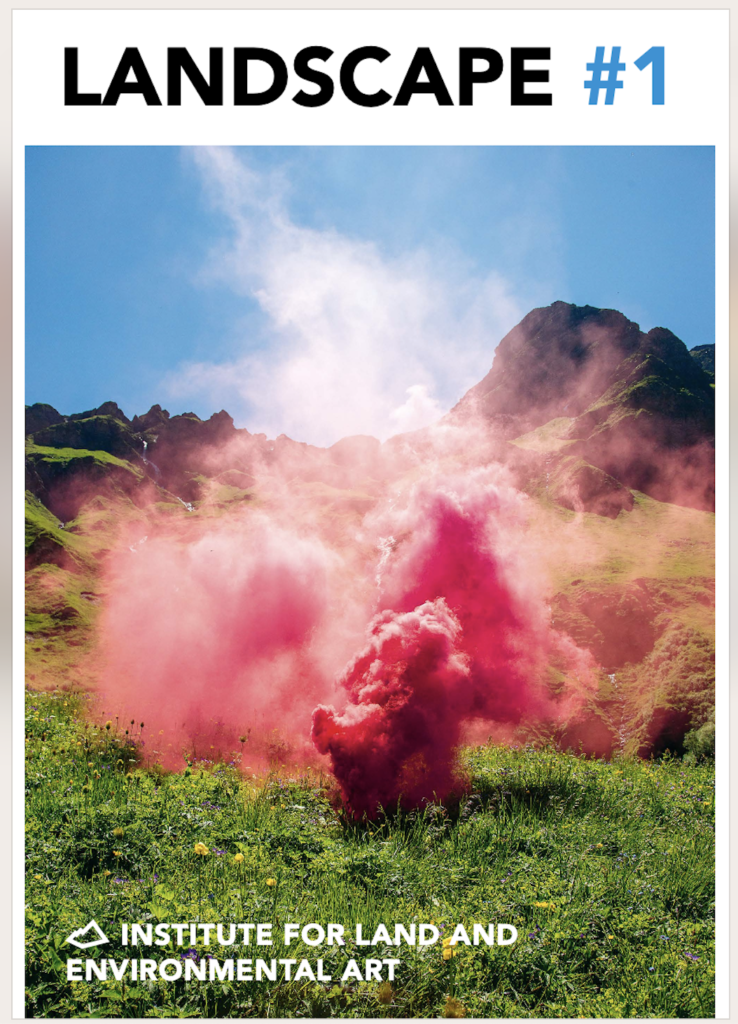
Landscape: Institute for Land and Environmental Art
co-edited with Johannes M. Hedinger
What is landscape? And what is art in the landscape? In recent years, the notion of the landscape has experienced a major shift in the context of visual arts.
Landscape is the first in the new series that offers a discursive and practical contestation with the topic of artistic engagement with landscape. The book entails several contributions by established scholars of Land art and Environmental art, along with quotations of canonical writings on landscape and examples of artistic interventions. The project builds on a rich tradition of landscape writings and simultaneously attempts at a reorientation of the category of Land art. Landscape accompanies the outdoor biennial Art Safiental and the international summer school Alps Art Academy in the Swiss Alps that explore art in the peripheral, rural and alpine regions. A detailed, visually compelling catalog of artistic projects conducted during the 2016 and 2018 biennials can be found in the final part of the book.
Editors: Johannes M. Hedinger, Hanna B. Hölling
Series: Documents of Land and Environmental Art, volume 1
Essays by: Aufdi Aufdermauer, Delphine Chapuis Schmitz, William L. Fox, Johannes M. Hedinger, Hanna B. Hölling, Mattli Hunger, Sibylle Omlin, Janis Osolin, Lukas Ott, Jano Felice Pajarola, Jolanda Rechsteiner, Emily Eliza Scott, Chris Taylor, Lucie Tuma
English and German, 288 pages, 114 images
Publication date: 2020
ISBN: 978 3 909090 94 5
Order: Vexer Verlag, St. Gallen/Berlin
2019
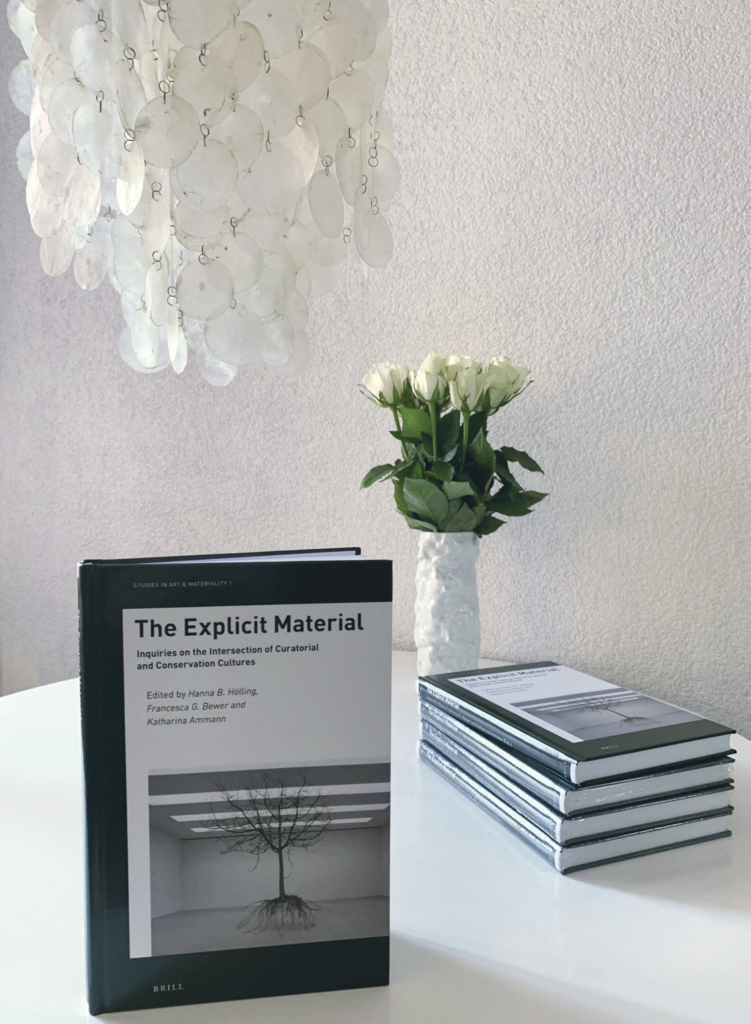
The Explicit Material: Inquiries on the Intersection of Curatorial and Conservation Cultures. Leiden and Boston: Brill
co-edited with Francesca Bewer and Katharina Ammann
The Explicit Material: Inquiries on the Intersection of Curatorial and Conservation Cultures gathers varied perspectives from the discourse of conservation, curation and humanities disciplines to focus on aspects of heritage transmission and material transitions. The authors observe and explicate the myriad transformations that works of different kinds—manuscripts, archaeological artefacts, video art, installations, performances, film, and build heritage—may undergo: changing contexts, changing matter, changing interpretations and display. Focusing on the vibrant materiality of artworks and artefacts, The Explicit Material puts an emphasis on objects as complex constructs of material relations. By so doing, it announces a shift in sensibilities and understandings of the significance of objects and the materials they are made of, and on the increasingly blurred boundaries between the practices of conservation and curation.
Editors: Hanna B. Hölling, Francesca G. Bewer and Katharina Ammann
Series: Studies in Art and Materiality, volume 1
Publication Date: 20 March 2019
ISBN: 978-90-04-39685-2
Read Brill preview
Download the flyer
Log in via institution to download the E-Book
2017
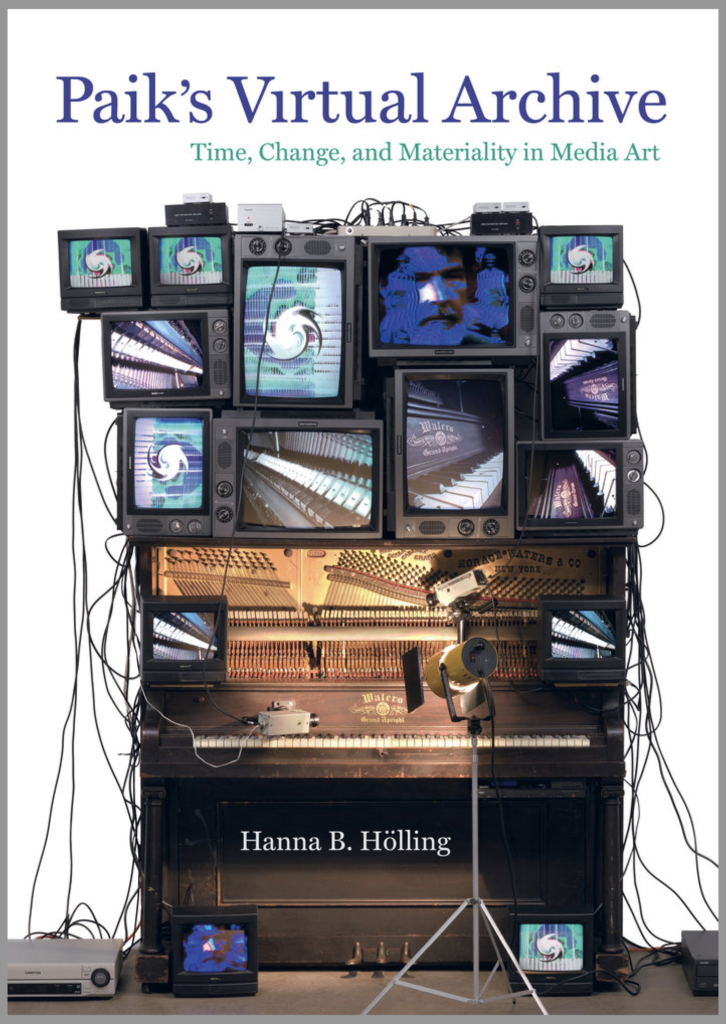
Paik’s Virtual Archive: Time, Change, and Materiality in Media Art. Oakland: University of California Press
Paik’s Virtual Archive contemplates the identity of multimedia artworks by reconsidering the role of conservation in our understanding of what the artwork is and how it functions within and beyond a specific historical moment. Using examples of works by Nam June Paik (1932–2006), the hugely influential Korean American artist who is considered the progenitor of video art, Hölling explores the relation between the artworks’ concept and material, theories of musical performance and performativity, and the Bergsonian concept of duration—and the parts these elements play in the conceptualization of multimedia artworks. In this book, Hölling combines her astute assessment of artistic technologies with ideas from art theory, philosophy, and aesthetics to probe questions related to materials and materiality not just in Paik’s work but in contemporary art in general. Ultimately, she proposes that the archive—the physical and virtual realm that encompasses all that is known about an artwork—is the foundation for the identity and continuity of every artwork.
REVIEW QUOTES
Christiane Paul, Adjunct Curator of Digital Art, Whitney Museum, and Associate Professor, School of Media Studies, The New School
“This book makes an invaluable contribution to the field of preservation and media art history by using the works of Nam June Paik—one of the pioneers and most important figures of media art—to philosophically and practically rethink approaches to media art conservation. Hölling reconsiders concepts of the conservation object in light of the emergence of digital media art, which has reframed our understanding of (im)materialities, time, change, and the archive. In highly original ways, the book addresses how transformations of multimedia artworks over time affect their behavior, their presentation and the ways in which audiences engage with them. Hölling brings unique expertise to the subject since she has not only thoroughly researched the history of Paik’s oeuvre but also actively participated in the conservation and curation of his work.”
Beryl Graham, Professor of New Media Art, University of Sunderland
“Starting with the wincing crash to the ground of one of Paik’s ‘proto–new media’ works, this book meticulously picks up the pieces, and wrestles the conceptual and the material challenges back into shape. A spirited and useful analysis for ensuring a lively future for media art. Decidedly un-dusty.”
Martha Buskirk, Professor of Art History and Criticism, Montserrat College of Art
“Developing strategies to preserve and ensure access to electronically encoded information is one of the major challenges of our era—in art, and in the culture at large. Hanna Hölling’s wide-ranging study is essential reading for its insights regarding the ongoing interpretation and updating necessary to address the impact of technological change on Nam June Paik’s work and for what this process tells us about the inherent fragility of all aspects of the modern archive.”
Peter Weibel, Chairman and CEO ZKM Centre for Art and Media, Karlsruhe, Germany, and Professor, University of Applied Arts Vienna
“The restoration and the conversation of media art is one of the greatest challenges for the future of our culture. Hanna B. Hölling’s compelling book is one of the most important contributions to this subject.”
Wulf Herzogenrath, art historian and curator
“It is wonderful to see that a new generation of media and art historians offer a fresh view on this global artist. Hanna Hölling is one of the leading scholars to help us understand Nam June Paik’s work now in the digital age.”
Rafael Lozano-Hemmer, media artist
“Time is slowly erasing the work of entire generations of media artists from our potential art history. The loss is irreparable and urgent action is needed. Fortunately, Hanna Hölling’s excellent research will guide us through this darkness!”
Andrea Gyorody, Assistant Curator, Allen Memorial Art Museum, Oberlin College
“The strength of Paik’s Virtual Archive is its ability to narrate and theorize the complexities of time-based media we are forced to confront most fully, Hölling argues, when such media inevitably pose conservation conundrums that become ethical and philosophical minefields. Hölling’s most overarching and thought-provoking argument is that conservation practice is not – nor has it ever been – a straightforward scientific endeavor, but is, in fact, a creative one, carried out alongside curatorial work.”
Gregory Zinman, Assistant Professor, Georgia Institute of Technology
“How do we care for the increasing number of artworks that challenge previously accepted notions of time and space? Hanna Hölling’s new book is an ambitious and clear-eyed attempt to provide an answer to that question, calling for a fundamental rethinking of curatorial and conservational notions of time and change in media artworks.” … “And yet, as Hölling makes clear, there is no going back when it comes to Paik. She tells us, ‘At the time of this writing, none of Paik’s works is displayed with its initial playback equipment in functional condition’ (p. 88). But an artist whose practice would be a headache for most conservators presents an opportunity for Hölling, who worked as chief conservator at ZKM Center for Art and Media Karlsruhe before arriving at her current position as lecturer in the history of art and material studies at University College, London. Her combined museological and academic outlooks uniquely shape Paik’s Virtual Archive, a book that will likely become required reading in curatorial and preservation graduate programs, and which will also be of keen interest to scholars in the fields of modern and contemporary art and media studies.”
Olivier Lussac, Professeur des universités esthétique, Université de Lorraine
“… L’auteure ne propose pas seulement une analyse des installations dans le contexte traditionnel de conservation des objets d’art, c’est-à-dire dans les conditions d’observation, de mesure et d’analyse. Elle cherche plutôt à comprendre leur conception dans un régime de relations culturelles, scientifiques et dynamiques. L’ouvrage tient son originalité de l’approche muséographique déclinée en trois parties : la première, « Concept and Materiality » [Concept et Matérialité] où sont évoqués les médias artistiques et performatifs ; la deuxième, « Time and Changeability » [Temps et Changeabilité] où sont abordéées les questions du temps et de la conservation ; enfin, la troisième, « Archive and Identity » [Archive et Identité] où sont avancées les notions de l’archive matérielle et immatérielle, avec les implications archivistiques et muséographiques. Une nombreuse iconographie soutient le propos.”
Jonathan Kemp, Associate Lecturer, University of Melbourne
“In a memorable opening to Paik’s Virtual Archive: Time, Change, and Materiality in Media Art, conservator and scholar Hanna Hölling recounts how she received the devastating news that Canopus, a laserdisc video work by Nam June Paik, had crashed down from a wall at her then-workplace. By taking this and other Paik “multimedia installations” (MMI) as the book’s narrative thread – originally her PhD thesis – Hölling generously unpacks her theme: How does the identity of a multimedia artwork persist through every act of conservation, every replacement or renewal, every redisplay, and every re-interpretation, especially given its inexorable material decay along the way? … She hints at a radical future where any difference between art and archive become more and more equivocal in terms of authorship, curation, and preservation. This creates space for a radical museology where the “new identity for the artwork” (165) is co-constituted in concrete and creative intra-actions of the many minds, hands, and forms of matter in acts of horizontalizing cultural production.”
Daniel Keyes, Associate Professor, University of British Columbia
“As an Art Historian and Conservator, Hölling offers a deep and lucid meditation on ephemerality that is both theoretical and practical. … She draws from a range of European theorists to offer her post-structural view of the archive as a place of potentials: ‘divorcing the archive from its exclusive “pastness,” one might conceive of the museum archive as a place where conservators and curators undertake the process of de – and re-activating artwork. … Hölling provides a compelling rationale for not dismissing attempts to re-imagine the artist’s concept that makes sense for precarious digital works that may gain a new, different life separate from their original coded existence.”
Anna Schäffler, Fellow, BildEvidenz, Freie Universtät Berlin
“Höllings Ausführungen … zeigen, wie die Praxis von Medienkunst einerseits in die institutionellen Konventionen eingemeindet wird und andererseits einen institutionellen Strukturwandel hervorrufen kann. Die Untersuchung zeichnet dabei aus, dass sie den aktuellen Wandel nicht nur beschreibt, sondern theoretische Vorschläge unterbreitet, um die sich verändernde Werkidentität einer multimedialen Installation zwischen Lagerung und Präsentation zu fassen. Höllings Buch verschafft darüber hinaus einen grundlegenden Zugang zur aktuellen Debatte innerhalb der zeitgenössischen Restaurierungsdiskussion, die bislang im deutschsprachigen Kontext kaum rezipiert wurde. … Denn, so zeigt Hölling überzeugend, diese Werke werden im Kontext von Erhaltungspraktiken immer wieder neu konstituiert und sind dementsprechend unabgeschlossen. Die kunsthistorische Analyse erfährt durch eine Auseinandersetzung mit der aktuellen restaurierungswissenschaftlichen Theorie zur Ausstellbarkeit historischer Erfahrungssituationen eine grundlegende Erweiterung bezüglich der Prozessualität von Geschichtsschreibung selbst.”
Read the Art Bulletin Review by Gregory Zinman
Read the caa:review, College Art Association by Andrea Gyorody
Read the Critique d’art review quote by Olivier Lussac
Read the Journal of the American Institute for Conservation review by Jonathan Kemp
Read the Visual Studies review by Daniel Kayes
Read die Kunstchronik review by Anna Schäffler
Read the University of California Press preview
Order the book ISBN:9780520288904
Book launches & presentations 2017
The Met, NYU/IFA, both New York, The Getty Center Los Angeles, UCL Insititute of Advanced Studies London, ZKM Center for Art and Media Karlsruhe, SiK Swiss Institute for Art Research Zurich – for details, see the event section on this website.
2015
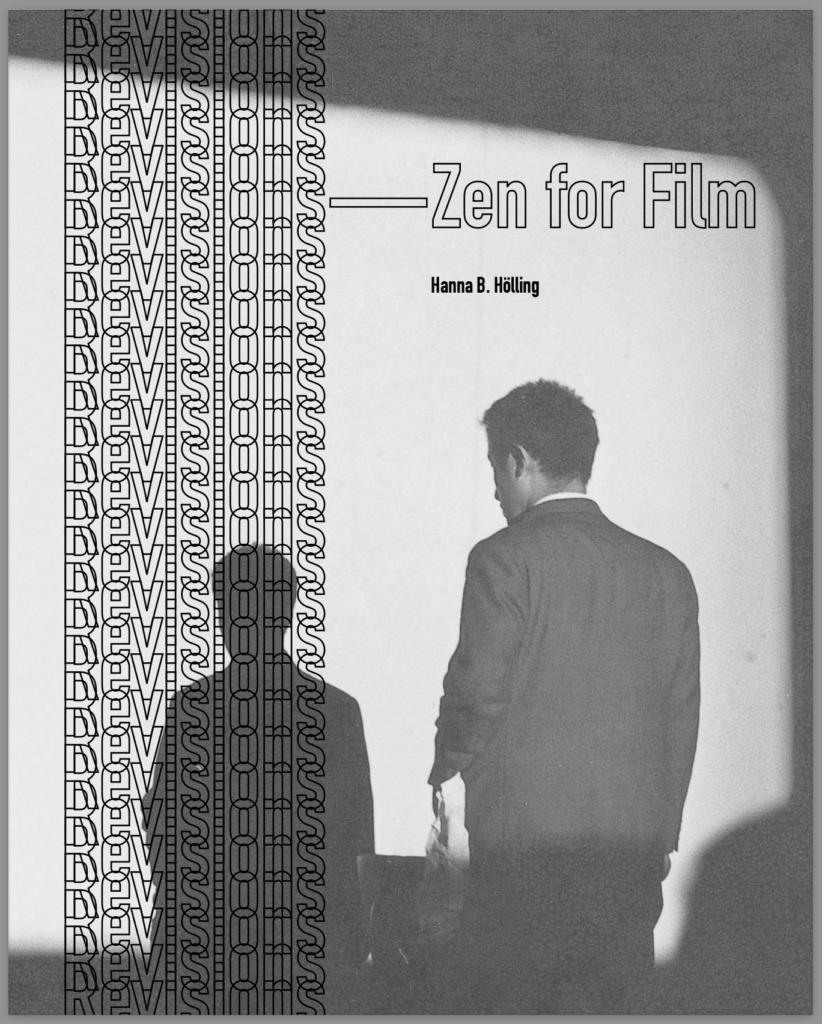
Revisions—Zen for Film. New York and Chicago: Bard Graduate Center, The University of Chicago Press.
How do works of art endure over time in the face of aging materials and changing interpretations of their meaning? How do decay, technological obsolescence, and the blending of old and new media affect what an artwork is and can become? And how can changeable artworks encourage us to rethink our assumptions of art as fixed and static? Revisions is a unique exploration of all of these questions.
This book, which accompanied an exhibition at the Bard Graduate Center, examines Zen for Film, also known as Fluxfilm no. 1, one of the most evocative works by Korean-American artist Nam June Paik. Created during the early 1960s, this piece consists of a several-minutes-long screening of blank film; as the film ages and wears in the projector, the viewer is confronted with a constantly evolving work. Because of this mutability, the project undermines any assumption that art can be subject to a single interpretation.
By focusing on a single artwork and unfolding the inspirations, transitions, and residues that have occurred in the course of that work’s existence, Revisions offers an in-depth look at how materiality enhances visual knowledge. A fresh perspective on a piece with a rich history of display, this catalog invites interdisciplinary dialogue and asks precisely what—and when—an artwork might be.
REVIEW QUOTES
Matthew Jesse Jackson, University of Chicago
“In Revisions—Zen for Film, Hanna B. Hölling offers many original observations about modern and contemporary art. Innovative in its conception and execution, Revisions investigates a critical moment in recent art history—namely, the appearance of ‘new media’ and its entry into, and historicization by, the art world and academia.”
Sarah Cook, coauthor of Rethinking Curating and cofounder of CRUMB
“Revisions—Zen for Film is refreshing and thought provoking. It presents a new take on both exhibition histories and Paik studies through its close reading of a single work from many different informed perspectives, sparking unexpected associations. It skillfully brings together an art historical approach with that of a conservator and a curator, contributing a new way of thinking about conservation, preservation, and curatorial practice.”
Jeffrey Weiss, senior curator, the Guggenheim Museum New York and an adjunct professor, New York University
“Yet it is Holling’s examination, in the catalogue, of the close mutual dependency of historical, conceptual, practical, and material concerns that begs our attention. These issues are all implicated in the installation, which challenges any notion of a monolithic identity of Zen for Film; they are unpacked in detail in the catalogue, where Holling is at pains to show that considerations regarding the logistics of making and mounting the work must not be separated from the projecťs governing formal and historical themes.” Artforum, March 2016.
Hannah Higgins, professor of Art History and University Scholar at University of Illinois Chicago
“Hölling’s book offers a wild ride through a whodunit of sorts, as she describes in vivid detail her practical . . . efforts to exhibit and understand a single artwork for an exhibition at BGC gallery in the fall of 2015. . . . The challenge this opening-up of the object and its authorial framework implies for conservationists is immense.” Critical Inquiry, May 2016
Judit Bodor, Aberystwyth University
“Hölling’s non-linear, circular discourse aesthetically parallels how Zen for Film engages with duration, systems, process, media and time. The book’s attention to Zen for Film’s afterlife seems an important addition to existing historical analysis of the artwork, as it maps out a critical territory on which complex issues of conservation and curation of both ‘old’ and ‘new’ media unfold and intersect to develop new methodologies, sensibilities and strategies. It is thus a significant contribution towards a growing body of discourse, practice and research focusing on the afterlives of ‘new’ media artworks, and should be read by both conservators and curators engaging with such issues in the context of museums and galleries.” Journal for Curatorial Studies / Intellect, June 2016
Lindsey Reno, University of New Orleans, Earl K. Long Library
“The volume is clearly and densely written. … Provides rich analysis and insights.” Art Libraries Society of North America, May 2016
Martin Koerber, professor at the University of Applied Sciences Berlin and head of the Department of Film at the German Cinematheque, Film Museum, Berlin
“Hanna Hölling zeigt, wie wegweisend Zen for Film für ein tieferes Verständnis von Medienkunst sein kann, oder für ein neues Kunstverständnis überhaupt. … Ich habe lange keine so kluge Abhandlung zu einem Medienkunstwerk gelesen, die ganz eng und genau beobachtend bei der Sache bleibt und aus dem Werk selbst heraus ihre kritische Haltung zum musealen Umgang damit entwickelt.” Journal of the German Conservation Association, March 2017
Read Artforum review
Read Critical Inquiry review
Journal for Curatorial Studies / Intellect review, available via teh Journal’s website
Read Art Libraries Society of North America review
Read The Art Blog Review
Read Journal of the German Conservation Association review (access via Journal website, available on this website in October 2017)
Read the University of Chicago Press preview
Order the book ISBN: 9781941792049
2013
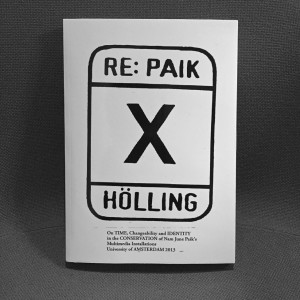
Re:Paik: On Time, Changeability and Identity in the Conservation of Nam June Paik’s Multimedia Installations. ’s-Hertogenbosch: Uitgeverij BOXPress
This doctoral dissertation completed at the University of Amsterdam (September 2013) poses questions that consider the constitution of conservation objects in relation to our understanding of what the artwork is. By tracing the changeability of Nam June Paik’s multimedia installations, Re:Paik problematizes the relation of their identity to the processes of transformation they undergo. It reconsiders the materiality of complex media installations with reference to their conceptual dimension and expands on their link to other ontological forms of art, such as musical performance. Because changeability may only be observed in connection with time, in my thesis, I propose to understand conservation as a process being inherently about time and involving ways of understanding time. But time seen from the perspective of media installation seems to reject the chronological matrix of conventional temporality expressed in sequential and chronological dimensions. I test the applicability of the Bergsonian concept of duration for the conceptualisation of multimedia works of art and, subsequently, argue that time governs not only objects but also their archive. It is on the basis of the archive–the final destination and the beginning of these artworks–that their identity and continuity is created.
